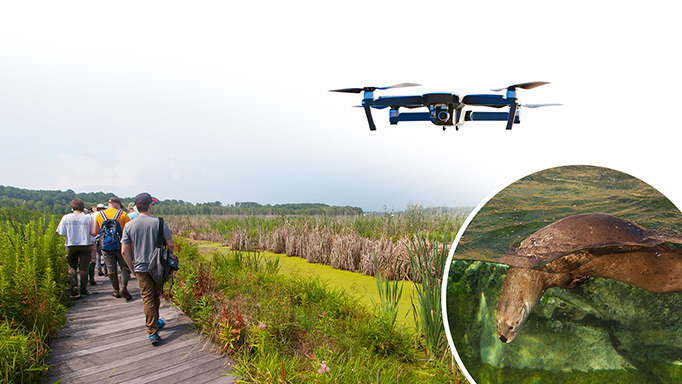/Balto_Birthday_Bash_Announcement_682x384.jpg)
/Balto_Birthday_Bash_Announcement_682x384.jpg)


Take a deep dive with the Cleveland Museum of Natural History in April as we learn about our most precious natural resource—water.
During Water Has Influence, a month-long exploration of this vital substance, we’ll deepen our understanding of the interconnectedness of life on Earth. You’ll have the chance to celebrate Earth Week at one of the Museum’s thriving nature preserves and hear from experts from the nonprofit Drink Local. Drink Tap. You’ll also learn about Cleveland’s prehistoric past, when the region was covered by a shallow sea and the fierce fish Dunkleosteus terrelli ruled the waters.
Calendar of Events
Presented by: Museum educators and Dr. Caitlin Colleary, Assistant Curator of Vertebrate Paleontology
Date: Thursday, April 15
Time: 7pm EST
Date: Tuesday, April 20
Time: 7pm EST
Presented by: Museum naturalists
Date: Thursday, April 22
Time: 10am, 1pm & 4pm EST
Co-hosted by Drink Local. Drink Tap.
Date: Thursday, April 22
Time: 6:30pm EST
Presented by: The Northeast Ohio Regional Sewer District
Date: Wednesday, April 28
Time: 7pm EST
Otter Demonstrations (weather permitting)
Presented by: Museum wildlife staff
Dates: Every Saturday and Sunday in April
Time: 2pm
Included with general admission
WATER’S INFLUENCE
Our survival depends on the health of our planet, from the air we breathe to—you guessed it—the water we drink. Protecting our environment enhances our well-being. We are fortunate that Cleveland borders the largest freshwater system in the world—the Great Lakes. This natural feature boosts tourism in our region, entertains us with recreational opportunities, offers spectacular views, and provides us with easy access to potable water.
But just as Ice Age glaciers once left their mark on our region’s topography, we have likewise shaped the landscape. Human activity has had detrimental effects on the Great Lakes, as rising temperatures and the use of chemicals threaten the health of these bodies of water. When we fail to safeguard our water systems, biodiversity suffers in Northeast Ohio and beyond.
Locally, runoff pollution in Lake Erie causes algal blooms—toxin-producing cyanobacteria that are harmful to ecosystems and humans. Left unchecked, algae overgrowth can contaminate drinking water. This resource may be ubiquitous in our region, but our ability to harness it is dwindling.
Gain a whole new appreciation for this life-sustaining compound during
Water Has Influence. Be sure to spread the word so that we can secure a better future for our region and our planet.
